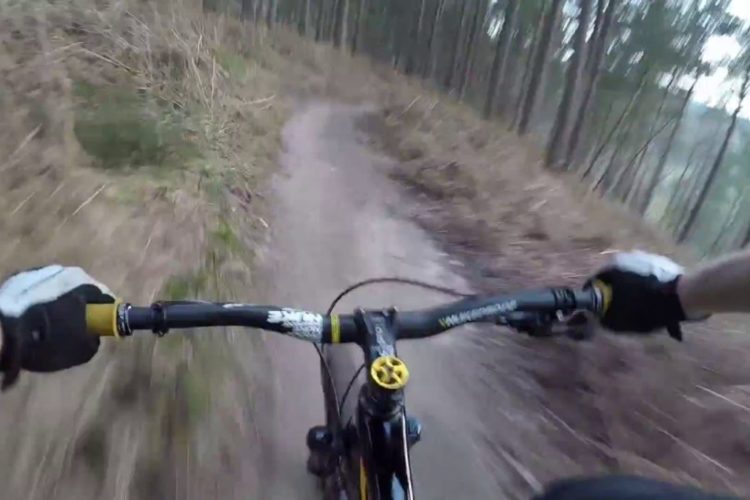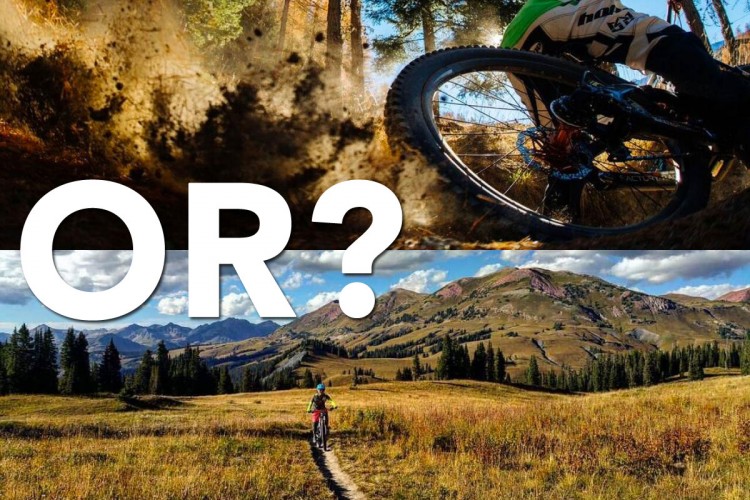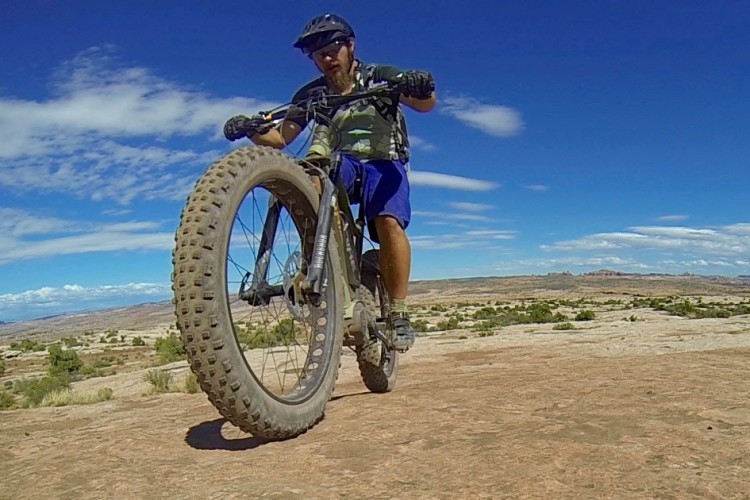Editor’s Note: John Fisch is an avid backcountry enthusiast who hikes, bikes and backpacks at every opportunity. While John is a regular contributor to Singletracks.co
In light of the recent buzz generated by the efforts of the Sustainable Trails Coalition to reverse the blanket ban on bicycles in federally-designated Wilderness, I thought it would be a good time to cover the most common objections to that effort. Many people don’t even know that bikes are banned from Wilderness, which indicates that the justification for that exclusion is not as self-evident as its proponents believe. Even among those who support the status quo, most don’t realize that the Wilderness Act was initiated in 1964, but the bike ban has never appeared in actual legislation and didn’t appear in Forest Service regulations until decades later. The key arguments that created and maintained that ban appear below, along with responses.

Note: Bear in mind that nobody is seeking access to 100% of all Wilderness trails 100% of the time, only that the blanket ban be removed and trails be assessed for cycling suitability on a case-by-case basis.
1. Bikes are mechanical.
It is often said that bikes are mechanical devices and therefore have no place in the Wilderness. However, many other mechanical devices are allowed in the Wilderness. While the mechanisms involved may be simpler, a boat with mechanically-pivoting oarlocks or a set of cross country skis with pivoting toe pieces also provide their users with a significant mechanical advantage.
Furthermore, on the technology scale, mechanical devices are lower than electronic devices, yet nobody would complain about carrying a GPS into the Wilderness, which precisely pinpoints the user’s location by signals from a constellation of satellites in orbit. The backpacker’s quiver is full of other high-tech items, from tents made out of space age fabric and metals, to freeze dried foods containing a full day’s caloric requirement in just a couple compact ounces, which are rehydrated by heating water on an ultralight titanium cook stove burning fossil fuels.
Bottom line: both higher technology than a bike and other forms of mechanical transport are already allowed in the Wilderness.

2. The Wilderness Act prohibits bikes.
At first blush, this would seem a reasonable position since the Act says ” . . . there shall be no temporary road, no use of motor vehicles, motorized equipment, or motorboats, no landing of aircraft, no other form of mechanical transport, and no structure or installation within any such area.”1 However it is important to understand that, in the context of its use at the time of the creation of the act, the phrase “mechanical transport” was used synonymously with motorized transport. Furthermore, the Congressional record supporting the creation of the Act backs this position, that the goal was to prevent only motorized vehicles and the infrastructure required to support them. Look at the laundry list of examples given in the statement above: each of them is motorized, which points to the intent of the statement. If non-motorized mechanical devices were meant to be prohibited, at least one would have been included in the list. Boats with oarlocks and cross country skis are, by definition, “mechanical transport.” Clearly, the intent was not to ban all mechanical transport. Knowing this, the USFS in implementing the Act defined mechanical as “powered by a non living source.”2
The anti-bike counter to this is that mountain bikes weren’t even conceived in 1964 (although people had been riding bikes in the backcountry almost as long as there have been bikes), so we can’t infer that bikes would have been included. Fortunately, Congress cleared this up for us in actual Wilderness legislation. The Rattlesnake Wilderness Act of 1980 states the following with regard to designating lands in the Lolo National Forest as Wilderness:
” . . . certain lands on the Lolo National Forest in Montana have high value for watershed, water storage, wildlife habitat, primitive recreation, historical, scientific, ecological, and educational purposes. This national forest area has long been used as a wilderness by Montanans and by people throughout the Nation who value it as a source of solitude, wildlife, clean, free-flowing waters stored and used for municipal purposes for over a century, and primitive recreation, to include such activities as hiking, camping, backpacking, hunting, fishing, horse riding, and bicycling;”3
Bottom line: Congress, the body responsible for creating Wilderness and setting the limits on Wilderness use, listed cycling as a form of “primitive recreation” suitable for Wilderness.

3. Bikes are inconsistent with Wilderness values.
Some argue that the very definition of Wilderness implies that bikes don’t belong. Let’s look at that definition:
Definition of Wilderness (c) A wilderness, in contrast with those areas where man and his own works dominate the landscape, is hereby recognized as an area where the earth and its community of life are untrammeled by man, where man himself is a visitor who does not remain. An area of wilderness is further defined to mean in this Act an area of undeveloped Federal land retaining its primeval character and influence, without permanent improvements or human habitation, which is protected and managed so as to preserve its natural conditions and which (1) generally appears to have been affected primarily by the forces of nature, with the imprint of man’s work substantially unnoticeable; (2) has outstanding opportunities for solitude or a primitive and unconfined type of recreation; (3) has at least five thousand acres of land or is of sufficient size as to make practicable its preservation and use in an unimpaired condition; and (4) may also contain ecological, geological, or other features of scientific, educational, scenic, or historical value.”4
The definition includes the following elements:
(1) “generally appears to have been affected primarily by the forces of nature, with the imprint of man’s work substantially unnoticeable”
A person on bike has similar impact as a person on foot and far less than a person on horseback (more on that later), so a bike need not impact the landscape any more than other allowed users. Moreover, bikepacking will always be very uncommon relative to backpacking, and it is the overnight visitor who establishes a noticeable presence in the Wilderness. More hikers will set up camp while most cyclists merely pass through.
(2) “has outstanding opportunities for solitude or a primitive and unconfined type of recreation”
Most anti-bike advocates claim the loss of solitude as an overriding concern. However, bikes don’t affect solitude, people do, no matter what their form of transportation. In areas where body count must be limited to preserve this solitude, permit systems exist or can be created. All equally low impact, human-powered user groups should have equal access to these limited opportunities. As for the “type of recreation,” again, this was meant to preclude motorized recreation, as evidenced above.
(3) and (4) above are completely independent of user type.
4. Environmental impact.
Trail damage is frequently cited as a justification for banning bikes from Wilderness areas. However, independent scientific research has proven that given similar conditions, hiking and biking wear on the land is similar, and both are far less severe than equestrian use, which is allowed in Wilderness areas.5

Like trail impact, wildlife impact is also falsely assumed to be greater from bikes. Again, multiple studies show that a variety of species flush at similar distances and with similar frequency from hikers and cyclists. Some species even flushed more frequently and at greater distances from hikers than from cyclists. 6
5. The Wilderness is a place for a slower pace, so we may properly enjoy it.

When I hike, my average speed is 2.5 – 3 mph. When I ride a challenging backcountry trail, my average speed is 4 – 6 mph. Even if we accept the premise that there is some magic number corresponding to a speed at which we can give proper reverence to the Wilderness, who’s to say that number sits between those two rates? What’s more, speed can be independent of mode of transportation. While on my bike, I have been passed by trail runners in hardcore training or trying to set personal bests on backcountry routes. I can gallop a horse as fast as I can ride my bike, especially over long distances. Bikes can go pretty fast downhill, but so can a backcountry skier who has skinned his way to the top of a high ridge or mountain for the purpose of flying down.
6. Bikes “shrink” the Wilderness.
Because a bike can carry a higher average speed than a hiker, a cyclist can penetrate deeper into the Wilderness. Like #5 above, though, how do we decide where to draw the line? Moreover, as previously noted, backpacking is more common (and logistically easier) than bikepacking, and modern backpacking equipment makes multi-day trips easier, allowing hikers to penetrate deeply into the Wilderness as well.
At least a bike requires fitness and skill on the part of its rider, while a horse does not. With both their speed and carrying capacity, horses allow anybody to penetrate deeply into the Wilderness. There is an entire outfitting industry built around delivering couch potatoes deep into our wildest places via horseback, and even providing them many creature comforts delivered on the backs of pack stock so they need not “rough it” too badly while they’re there.
7. User conflicts.

There are occasionally conflicts between members of different user groups, which some believe to be justification for banning bikes. Of course, this requires an assumption that the only way to deal with potential conflict is simply to remove one of those in conflict, and that the one removed must of course be the cyclist. The fact is that serious incidents are rare and user conflicts are easily managed on most trails. Many of these trails see high usage from multiple user groups. If this can be managed on high density trails, it definitely can be managed on the much lower density trails found in Wilderness areas.
I won’t deny that there are some bad apples out there on bikes, but no one user group has a monopoly on either virtue or vice. There are hikers who cut switchbacks, relieve themselves near water sources, build illegal fire rings that scar the land, and throw their butts/roaches into dry tinder. If you think the negative impact of a few bad apples is cause for banishment, I encourage you to consider the amount of damage done by a single forest fire, and then research how much backcountry habitat has been destroyed by those on foot.
I was seriously bitten by a dog while on the trail and suffered major, deep puncture wounds. It was a prime example of a “significant emotional event.” However, I never felt the need to use this incident to try to justify banning all dogs from the trail just to facilitate my own comfort.

8. Can’t we have a place of our own?
This argument is closely related to #7. Some people just don’t want to see a bike while they’re hiking. Whether they fear the speed of the bike or are just offended by the sight of this mechanical thing in the backcountry, they simply don’t want it there. They may also have had a bad encounter with a cyclist. I am not insensitive to these concerns, but there is an easy answer to alleviate them.
First, I must say that, having taken up backpacking at age 9 and not getting a bike until age 35, my vibram-sole roots run deeper than my knobby-roots. In all the thousands of encounters with cyclists I had as a hiker in those decades before getting a mountain bike even crossed my mind, I never once felt like my experience had been diminished by a cyclist. Nevertheless, I understand this is very disturbing to some.
In most cases, people simply need to understand that depriving one group is not an equitable solution and that some sharing is necessary in a civilized society. The creation of a privileged class is never a good thing. But it is still possible to provide hikers a bike-free experience via a shared use schedule, which would only permit bikes at limited times. These schedules have proven very effective in eliminating user conflicts, real or perceived. The surest sign of a selfish anti-bike zealot is a built in refusal to even consider such an arrangement.
9. You have plenty of other places to ride!
This may be true depending on your definition of “plenty,” but two problems remain. First, every trail is unique, and offering up one is not a substitute for denying another. Furthermore, the discussion of equity must include quality as well as quantity. As an example, I will use my home state of Colorado. Colorado has 4,433,000 acres of roadless area.7 Of that roadless area, 3,735,000 acres is Designated Wilderness.8 This means bikes are banned from over 84% of the roadless areas in Colorado by Wilderness designation alone. This doesn’t take into account National Parks, other USFS or BLM restrictions, or other state and local restrictions. Moreover, many trails begin and end outside Wilderness areas, but because some portion of them passes through Wilderness, the entire route is rendered nonviable for cycling.
Here’s the acid test regarding this argument. Put the shoe on the other foot and tell hikers they are prohibited from enjoying their low-impact, human-powered activity on upwards of 85% of their most cherished lands. We can safely say they wouldn’t respond by saying “That’s okay, there are plenty of other places where we can hike.”
10. So today you want bikes. What’s next, motorcycles? ATVs? Jeeps?

Anyone who has studies rhetoric, logic, or philosophy knows that the so-called “slippery slope” argument is inherently fallacious. It is particularly so here since “low impact” and “human powered” are bedrock cornerstones of the argument in favor of allowing bikes in Wilderness. Those terms are also at the heart of the intent of the Wilderness act. To both Wilderness legislation and those who seek to bring current regulations back in line with that legislation as it was prior to 1984, those terms are inviolate.
More Information
For more information on this topic, please be sure to catch up on these articles:
- Opinion: Opening Wilderness to Mountain Bikes Is the Most Important Advocacy Effort in History – And STC needs your help!
- Podcast: The STC’s Plan to Get Mountain Bikes into Wilderness, Part 1
- Podcast: The STC’s Plan to Get Mountain Bikes into Wilderness, Part 2
Update 07/14/16: The Sustainable Trails Coalition’s Bill Has Been Introduced in Congress
References:
- WILDERNESS ACT Public Law 88-577 (16 U.S. C. 1131-1136) 88th Congress, Second Session September 3, 1964. http://www.wilderness.net/NWPS/documents//publiclaws/PDF/16_USC_1131-1136.pdf
- Code of Federal Regulations Title 36, Volume 2.
http://www.wildernessbicycling.org/bikesbelong/cfr.html - Rattlesnake Wilderness Act of 1980
https://www.law.cornell.edu/uscode/text/16/460ll - WILDERNESS ACT Public Law 88-577 (16 U.S. C. 1131-1136) 88th Congress, Second Session September 3, 1964. http://www.wilderness.net/NWPS/documents//publiclaws/PDF/16_USC_1131-1136.pdf
- Multiple studies, most of which can be found at:
https://www.imba.com/resources/research/trail-science/natural-resource-impacts-mountain-biking - Multiple studies, most of which can be found at:
https://www.imba.com/resources/research/trail-science/environmental-impacts-mountain-biking-science-review-and-best-practices - United States Department of Agriculture, United States Forest Service Roadless Conservation web page:
http://www.fs.usda.gov/detail/roadless/2001roadlessrule/maps/statemaps/?cid=fsm8_037704 - Wilderness.net
http://www.wilderness.net/NWPS/chartResults?chartType=AcreageByStateMost











4 Comments
Apr 5, 2022
Feb 24, 2016
Feb 15, 2016
Dec 19, 2017